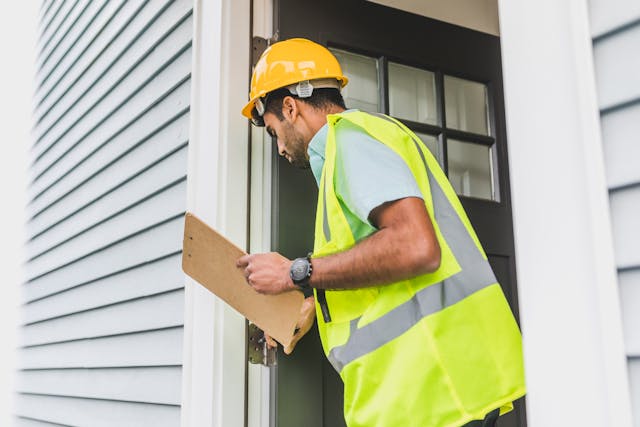In the world of mortgage note investing, safeguarding your investment is crucial. One effective way to mitigate risks and protect your assets is through loss control inspections. Whether you’re new to note investing or looking to deepen your understanding, exploring the significance of loss control inspections can be enlightening.
What Are Loss Control Inspections?
First things first, let’s break down what exactly loss control inspections are and why they matter in the realm of mortgage note investing.
Simply put, loss control inspections are assessments carried out on properties to evaluate potential risks that could lead to loss, damage, or liability.
Loss control inspections serve as a proactive measure to assess and mitigate potential risks associated with mortgage notes. These inspections are conducted by trained professionals who evaluate the condition and occupancy status of the property securing the mortgage note.
Why Do Field Inspections?
Now, you might be wondering, “Why should I care about that?” Well, when you’re investing in mortgage notes, these inspections are your secret weapon in safeguarding your investment.
Let’s delve into how loss control field inspections relate to mortgage note investing and explore the nuances between residential, insurance, and commercial inspections.
Residential Loss Control Inspections

For those investing in residential mortgage notes, conducting regular loss control inspections is essential. These inspections involve a thorough examination of the property, focusing on aspects such as occupancy status, property condition, and any potential hazards. The goal is to identify and address issues that could jeopardize the value of the asset.
During a residential loss control inspection, inspectors typically assess the property’s exterior and interior, looking for signs of neglect, damage, or unauthorized occupancy. Common red flags may include overgrown landscaping, broken windows, or evidence of vandalism. By promptly addressing these issues, investors can protect their investment and maintain the property’s value.
As a note investor, having a thorough residential loss control inspection can provide invaluable insights into the property’s true condition, helping you make informed decisions about your investment.
Insurance Loss Control Inspections
Insurance loss control inspections play a vital role in mitigating risks associated with insurance coverage for mortgage notes. Insurance companies often require these inspections to assess the property’s condition and identify any hazards that could increase the likelihood of insurance claims.
During an insurance loss control inspection, inspectors focus on evaluating fire, safety, and liability risks associated with the property. This may include checking for proper fire prevention measures, such as working smoke detectors and fire extinguishers, as well as ensuring compliance with building codes and regulations. By addressing potential hazards, investors can reduce the risk of insurance claims and maintain favorable insurance coverage.
For note investors, understanding the findings of an insurance loss control inspection can help gauge the level of risk associated with the property and inform insurance coverage decisions
Commercial Loss Control Inspections
Investors involved in commercial mortgage notes also benefit from conducting thorough loss control inspections. Commercial properties present unique challenges and risks, making proactive risk management essential for protecting investments.
Commercial loss control inspections encompass a comprehensive assessment of the property’s physical condition, as well as its compliance with safety and regulatory standards. Inspectors may evaluate various aspects, including structural integrity, maintenance practices, compliance with building codes, ADA accessibility, environmental risks, and adherence to zoning laws.
Inspectors may also assess factors like occupancy levels, tenant safety protocols, and the presence of hazardous materials. As a note investor venturing into commercial real estate, a comprehensive loss control inspection is essential for mitigating risks and ensuring the long-term profitability of your investment.
Why Loss Control Inspections Matter
Loss control inspections are more than just routine assessments; they are strategic measures to protect investments and minimize risks. By conducting regular inspections, investors can:

1. Identify Potential Risks
Loss control inspections provide valuable insights into the condition and occupancy status of the property, allowing investors to identify potential risks and address them promptly.
2. Mitigate Losses
By addressing issues proactively, investors can mitigate potential losses associated with property damage, unauthorized occupancy, or insurance claims.
3. Maintain Asset Value
Regular inspections help maintain the value of the underlying asset by ensuring proper maintenance and addressing any issues that could affect its marketability.
4. Comply with Regulations
Compliance with safety, zoning, and insurance requirements is essential for protecting investments and avoiding costly penalties or legal issues.
Staying Proactive and Vigilant
Loss control inspections are not just another bureaucratic hurdle to clear—they’re your allies in the world of mortgage note investing. By leveraging these inspections to gain insight into the condition and risks associated with a property, you can make more informed investment decisions and protect your bottom line.
Whether investing in residential or commercial mortgage notes, loss control inspections are essential for protecting assets and maximizing returns. By staying proactive and vigilant, you can navigate the complexities of note investing with confidence and peace of mind.
